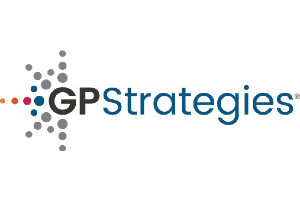Workplaces have more technology today than ever before as companies adopt solutions to close skills gaps and improve collaboration, productivity and performance of employees. One additional application of innovative technology that companies are currently exploring is the Metaverse, which has become an intriguing option for enterprises seeking more engaging ways for distributed teams to connect, learn and work. A McKinsey study found that 57% of Metaverse-aware companies say that they are adopters, with a Meta study similarly finding 60% of businesses want to see virtual reality (VR) headsets introduced to their workforce by 2024, and 70% of workers see the metaverse as a driver for global hiring.
While the adoption of the Metaverse might be a newer concept for some, introducing immersive technology into the enterprise isn’t. VR is already being used at scale for training employees by some of the largest companies in the world and is bridging the path to a future of more connected and immersive digital worlds like the Metaverse. By examining these current use cases, we can predict how the Metaverse can introduce new opportunities for companies to reinvent workforce performance and take the employee experience and learning and development (L&D) to the next level.
How Can the Metaverse Improve Training?
Companies spend on average approximately $1,300 per worker on L&D, but the return on investment (ROI) of many training methods today remains low — or altogether unmeasurable. Traditional training modalities such as manuals, textbooks, videos and lectures aren’t as effective and measurable in many cases, especially with organizations that experience high turnover or have dispersed teams. Hybrid and remote work models can have added challenges (e.g., employee disengagement and disconnection) to creating a learning environment that is both engaging and impactful.
Some of the largest Fortune 1000 companies have successfully applied immersive learning to their L&D programs and seen results that include: more engaged employees, enhanced customer service, better safety practices and more efficient operations.
The Metaverse has the potential to bring these benefits to the next level — enabling training managers to reach employees virtually without the costs and resource constraints of traveling to the location site and facilitating more opportunities for group learning and team collaboration. It also presents a new, untapped opportunity for companies to solve some of their greatest L&D challenges with a centralized hub that can be transformed into a 3D virtual space that’s identical to an office and/or traditional classroom. This creation of a realistic and detailed virtual environment has the potential to transform learning and collaboration across organizations in the new era of hybrid and remote work.
Valuable Immersive Data
Another huge benefit that we’re seeing today from the use of VR training in the enterprise is the access to unique data that has not been available through traditional learning modalities. Extending VR to the Metaverse could improve an organization’s ability to uncover even more unique data, which can be derived from new ways of interacting and engaging both the workforce and the company’s broader ecosystem. Think about it in terms of the data already needed and used to run a business along with new and unique insights that can only be gained when simulating environments that may be impossible to recreate in the real world on demand.
For example, L&D leaders, in addition to training program adoption, want to understand employee engagement and sentiment, and overall competency for a specific task or role. The efficacy of that training and how it translates to on-the-job performance can unlock insights that inform how future training should be designed and deployed. This rich, insightful data is actually attainable today with an enterprise-ready VR training platform.
Today, VR training modules can record up to 40 data points per second on gaze (where people look), capture situational verbal analytics and specific measures of knowledge retention. This data enables learning leaders to understand what employees actually know and why, and can help to predict how they will perform in the real world. The connectivity and infrastructure of a Metaverse-enabled platform could drastically help the collection and processing of data so companies can make better and more informed decisions to support their business goals.
Converting Immersive Data Into Measurable Outputs
Another significant benefit of immersive technology is gaining insight to where skills gaps are in the workplace. If an employee is struggling to perform a specific task in the virtual environment then they’re likely to have the same difficulties in real life. To unlock tangible training results, companies must delegate responsibilities to L&D leaders to collect, analyze and interpret data for each learners’ activities. Often, this never happens because the insights needed are not available or accessible. However, with the unique data captured from immersive experiences, employers can uncover a more holistic view of their employees’ progress and determine the best tangible objectives they should set to help them address their most challenging skills gaps.
With VR training already proving its impact in enterprises today, the Metaverse is set to bring about more interconnectedness and data to help drive elevated workforce engagement and performance. Companies that want to take advantage of these benefits in the future should consider exploring the use of VR technology and start bridging their journey to the Metaverse today.


